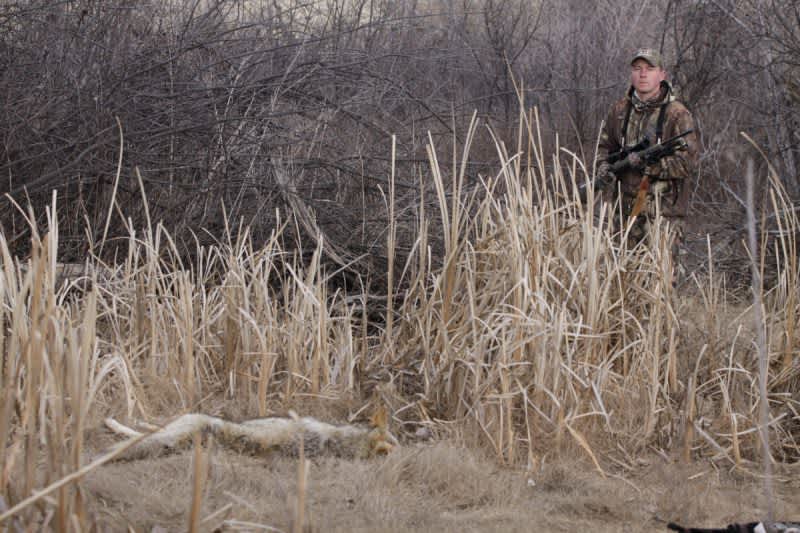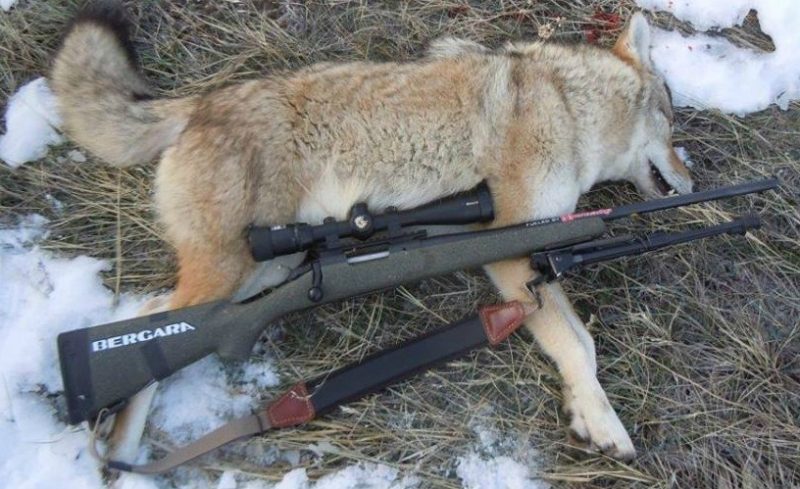Kayser on Coyotes: Targeting Bedroom Cover
OutdoorHub Reporters 01.25.17

Whitetail hunters are the hands-down champs when it comes to scouting and locating bedrooms. If you want to add more coyotes to your winter count, then copy this time-tested, whitetail tradition and locate possible coyote bedrooms.
Coyotes may flop down wherever they wish in a perfect world, but if they’ve felt hunting pressure, they retire to sanctuaries for bedding. Remember these adjectives and descriptions: rugged, bushy, rough, roadless and impenetrable. If you find habitat in your hunting area that fits one or more of these descriptions, then you might be staring at a coyote bedroom.
As you begin to inventory textbook bedding cover on a property, be sure to look for alternative sites that might be more appealing depending on the weather forecast. Oftentimes traditional bedding cover takes second place when wind, rain or snow ruins a day. Rugged river bluffs suddenly don’t look as appealing when winds whip at 50 mph or more. Grassy swales don’t have the same umbrella effect as a briar patch in a hurricane-like downpour.
Wetlands are often the preferred home of ducks everywhere, but coyotes also utilize the thick, cattail cover for refuge. They won’t necessarily plop down in water, but many marsh areas include islands, peninsulas and dry fringe areas retaining the characteristic thick marshland habitat. The nearly impenetrable cover provides coyotes with a secure bedding area that offers a rustling alarm if danger comes along, and it’s a great place for coyotes to start a hunt. Numerous small game animals also take advantage of the ideal environment.
In the Midwest and Great Plains, coyotes can often be without thick habitat due to intensive farming operations that leave little cover between fence rows. In these instances, look for micro environments with slivers of cover for coyote nap options. Investigate old quarry sites, disheveled farmsteads, undeveloped back lots of new subdivisions, and overgrown canal systems. Coyotes retreat to these areas because of their less-than-manicured appearance.
Finally, look for “off-limits” areas that are closed to hunting access. This could be a military reservation, an industrial site, or even a nature park on the edge of suburbia. With no hunting pressure and limited human activity, these locations attract coyotes looking for an escape from human intrusions. You won’t be able to hunt these locations, but scouting can reveal an adjacent property where you can set up to call a refuge coyote right into your lap.
With a handful of bedrooms on your hit list, start scouting for setup sites adjacent to cover. Elevated perches overlooking openings that connect to the bedding cover offer ideal ambush locations. In the morning, you want to be in position to catch coyotes returning to sanctuary settings; in the afternoon, position to waylay a coyote as it departs for nightly hunting.

Heavenly Hale Bales
One morning I clamored high into a stack of round hay bales before dawn. The bales gave me an elevated overlook to watch for coyotes returning to dense river-bottom cover for daily retirement. Thirty minutes later, I felt confident I had good shooting light and was about to flip the switch on my Grim Speaker caller when I noticed a slinking form along a pasture fence. It was a coyote!
I slid my rifle to the opposite side of the bale to target the oblivious coyote and lined up the scope’s reticle on its form. Barking once stopped the coyote for an easy broadside shot. There would be no more bunny dreams for that cagy coyote!
Editor’s note: Be sure to check out CarbonTV for free, on-demand predator content such as “Coyote Country.” Watch and enjoy!
Images by Mark Kayser

